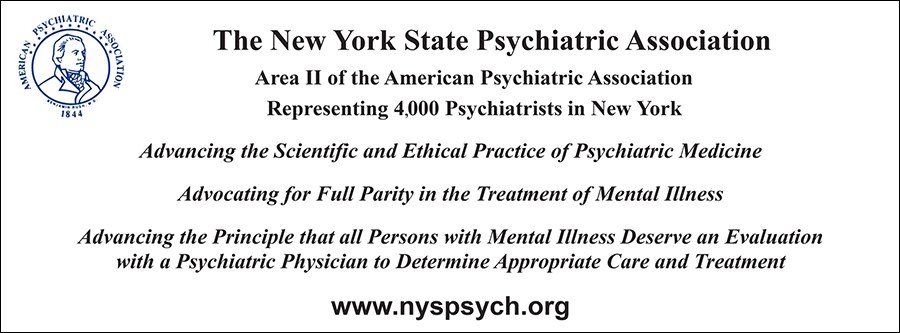The Centers for Disease Control and Prevention (CDC) defines chronic pain as pain lasting more than three months that can result from an underlying medical disease or condition, injury, medical treatment, inflammation, or unknown cause.1 Studies find a strong correlation between pain and mental health conditions2, and individuals living with chronic pain are at increased risk for depression, anxiety, and substance use disorders. Data published by the CDC estimates nearly 21% of US adults (51.6 million persons) experience chronic pain, and nearly 7% (17.1 million persons) experience high-impact chronic pain.3 The CDC reported chronic pain as the leading cause of disability in the United States in 2019.4
The intersection between chronic pain and behavioral health conditions is well-documented.5 According to the CDC, chronic pain has been linked with depression, Alzheimer’s disease and related dementias, higher suicide risk, and substance use and misuse6, and a 2017 study found that 35-45% of individuals with chronic pain also experience depression.7 The Anxiety & Depression Association of America reports chronic pain disorders are common in those with anxiety disorders.8 In 2023, new research from The University of Arizona estimated that nearly 1 in 20 adults in the US experience co-occurrence of chronic pain and anxiety or depression, which results “in functional limitations in daily life.”9
Jennifer S. De La Rosa, PhD, Director of Strategy for The University of Arizona Health Sciences Comprehensive Pain and Addiction Center and lead author of the study, stressed the importance of the results, stating, “The study’s findings highlight an underappreciated population and health care need – the interdependency between mental health and chronic pain.”
In 2020, Mental Health America (MHA) released a report with data collected from its online mental health screening program that identified a connection between mental health and chronic pain.10 The MHA report includes an analysis of the responses from over 161,000 individuals who completed the screening between 2015 and 2019 who were experiencing both chronic pain and mental health conditions. Among the main findings of the report:
- Individuals with arthritis or other chronic pain are more likely to screen positive or moderate to severe for a mental health condition (79%) than the general screening population.
- 48% of people who completed the PTSD screening reported a chronic health condition and chronic pain.
- Veterans and active-duty military are the special population groups most affected by arthritis or chronic pain.
In addition, individuals with chronic pain were more likely to have also received treatment or support for their mental health than those without chronic pain. The MHA report notes that “People who experience adversity or emotional or physical trauma in childhood also have a higher risk of chronic pain in their adult lives. Fifty-five percent of people who have experienced multiple adverse childhood experiences (ACEs) have chronic pain.”
The MHA report suggested policy and practice recommendations, including urging primary care physicians to initiate proactive conversations about chronic pain and mental health, engaging in trauma-informed care, patient-centered care and use of shared decision-making tools, integrating peer support, expanding interdisciplinary teams, investing in research for tools that work with diverse populations and incorporating such research into medical school curricula. In addition, the report calls for behavioral health services “as a central feature of care for arthritis or other chronic pain” and adds, “care should include a focus on trauma, stress, anxiety, depression, PTSD, coping skills, and resilience-building as opposed to solely substance use-focused services and supports.”
Various stakeholders prepared the federal Pain Management Best Practices Inter-Agency Task Force Report and includes a series of best practices for managing acute and chronic pain, including medications, restorative therapies, interventional procedures, behavioral health approaches, and integrative health.11 The report devotes several pages to addressing patients with both chronic pain and mental health and substance use comorbidities, stating, “Given the intersection between psychiatric/psychological symptoms and chronic pain, it is important that the behavioral health needs of patients with pain be appropriately and carefully evaluated and treated with the concurrent physical pain problem.”
Healthcare leaders and regulators have also addressed these issues. Effective July 1, 2019, The Joint Commission (the “Commission”) expanded its pain assessment and management standards applicable to behavioral healthcare organizations. These standards are an important tool for acknowledging the intersection of chronic pain and co-occurring mental illness and substance use disorders. The Joint Commission is a global nonprofit organization that accredits and certifies more than 22,000 healthcare organizations and programs across the United States. It offers voluntary accreditation and certification of healthcare organizations, programs, and services and focuses on ensuring safe and high-quality patient care. The Commission also develops standards for care delivery that form the basis of its evaluation process.
The Commission publishes the R3 Report (referring to Requirement, Rationale, and Reference), which summarizes the rationale and references for Joint Commission evaluation requirements. Issue 20 of the R3 Report, issued on December 21, 2018, outlines the following additional requirements that apply, among others, to accredited behavioral healthcare organizations.
The Commission added a new requirement for acute 24-hour settings, which requires the entity to assess pain and treat or refer for treatment, which strategies may be nonpharmacologic, pharmacologic, or a combination of approaches. The rationale notes: “Pain, especially chronic pain, frequently occurs together with mental and/or substance use disorders. These conditions must be co-managed to achieve progress in treatment for the affected individuals. If pain screening suggests a physical pain assessment is indicated for the individual, acute medically supervised behavioral health settings should assess and respond to physical pain by providing or referring the individual for treatment.” Under this new standard, acute-care settings that provide 24-hour care must demonstrate competency in assessing, treating, and referring patients who present with pain. The requirement includes management of pain along with mental health and substance use disorders, which are often co-occurring.
The Commission requires practitioners working in acute 24-hour settings and providing direct care, treatment, or services must participate in education and training on pain assessment and pain management consistent with the scope of their license. In this case, the rationale states: “Psychiatric and behavioral conditions have been associated with chronic pain, long-term opioid prescription receipt, and opioid misuse. Individuals with chronic pain generally require extensive biopsychosocial assessment and multidisciplinary treatment. Therefore, to provide quality care, practitioners must be knowledgeable about pain assessment, multiple modalities of pain treatment, early identification and prevention of harm from opioid therapy, and adverse health and well-being outcomes associated with physical pain. The organization can increase practitioner competence in pain assessment and management by providing access to evidence-based educational resources.”
Additional requirements have been put in place on the federal and state levels to address training in pain management and substance use disorders. For example, several years ago, New York imposed on prescribers a new training requirement in pain management, palliative care, and addiction. Once every three years, prescribers must complete at least three hours of coursework or training on the following topics: New York State and federal requirements for prescribing controlled substances, pain management, appropriate prescribing, managing acute pain, palliative medicine, prevention, screening and signs of addiction, responses to abuse and addiction and end of life care. In addition, the federal Drug Enforcement Administration recently imposed a new 8-hour training requirement on all DEA-registered practitioners on the treatment and management of patients with opioid or other substance use disorders. This one-time training mandate includes an attestation of completion as part of a prescriber’s next DEA registration renewal.
Finally, a new Commission requirement mandates that healthcare organizations facilitate practitioner access to Prescription Drug Monitoring Program databases, which prevent misuse and diversion of prescription medications. Many states require that prescribers consult a prescription drug monitoring program before prescribing controlled substances for their patients. For example, in New York, the Internet System for Tracking Over-Prescribing (I-STOP) law, enacted into law in 2013, requires prescribers to consult the Prescription Monitoring Program Registry (PMP) before issuing a prescription for New York Schedule II, III, and IV controlled substances. The PMP, which must be consulted at least 24 hours before writing a Schedule II-IV prescription, provides prescribers with secure access to their patients’ prescription histories. Since initiating the PMP program in 2013, New York has joined more than 30 other states in a data-sharing collaborative that permits interstate access to controlled substance prescription information. Access to prescription drug monitoring programs is essential to ensuring safe and well-monitored utilization of controlled medications that assist in the treatment of mental illnesses, such as benzodiazepines, stimulants, and sleep aids.
The addition of these standards to the accreditation and review standards of The Joint Commission is an excellent example of the commitment of the healthcare system to recognize and adequately address chronic pain and its impact on behavioral health. In conclusion, September is known as Pain Awareness Month. The National Institute of Neurological Disorders and Strokes recognizes this time as “…an opportunity to reflect on the needs of millions of people with chronic pain, as well as the research that we hope will better prevent and treat it.”12 The 2023 designation touted promising research underway to provide a better understanding of the biology of different pain conditions, recognizing potential pain targets, and testing new treatment approaches. Ideally, healthcare professionals and care systems will work together to address these complex interconnected issues and ensure that the highest level of care is provided to those in need.
Rachel Fernbach, Esq. is the Executive Director and General Counsel of the New York State Psychiatric Association and a Partner of the firm Moritt Hock & Hamroff LLP, where she concentrates her practice in the area of not-for-profit law and health care law with a specialty in psychiatry and other mental health services.
Jamie Papapetros is Research and Communications Coordinator at New York State Psychiatric Association’s Government Relations Office, in conjunction with Karin Carreau of Carreau Consulting. Mr. Papapetros has a decade of experience in government relations, identifying, tracking, and analyzing pertinent legislation, providing legislative and electoral research, memo preparation, and in-depth legislative and regulatory reports.
Footnotes
- www.cdc.gov/injury/pdfs/bsc/BSC_Background_Overview_Progress-GL-Update_6_28_cleared_final_D_Dowell-508-fx.pdf
- www.psychiatry.org/news-room/apa-blogs/chronic-pain-and-mental-health-interconnected
- www.cdc.gov/mmwr/volumes/72/wr/mm7215a1.htm
- www.cdc.gov/injury/pdfs/bsc/BSC_Background_Overview_Progress-GL-Update_6_28_cleared_final_D_Dowell-508-fx.pdf
- www.hhs.gov/sites/default/files/pmtf-final-report-2019-05-23.pdf
- www.cdc.gov/mmwr/volumes/72/wr/mm7215a1.htm#contribAff
- www.ncbi.nlm.nih.gov/pmc/articles/PMC5472077/
- adaa.org/understanding-anxiety/related-illnesses/other-related-conditions/chronic-pain
- healthsciences.arizona.edu/news/releases/study-shows-millions-people-live-co-occuring-chronic-pain-and-mental-health-symptoms
- www.mhanational.org/mental-health-america-reports-strong-connection-between-chronic-pain-and-untreated-mental-health
- www.hhs.gov/sites/default/files/pmtf-final-report-2019-05-23.pdf
- www.ninds.nih.gov/news-events/directors-messages/all-directors-messages/september-pain-awareness-month-we-are-all-together#:~:text=Each%20September%2C%20Pain%20Awareness%20month,better%20prevent%20and%20treat%20it.






